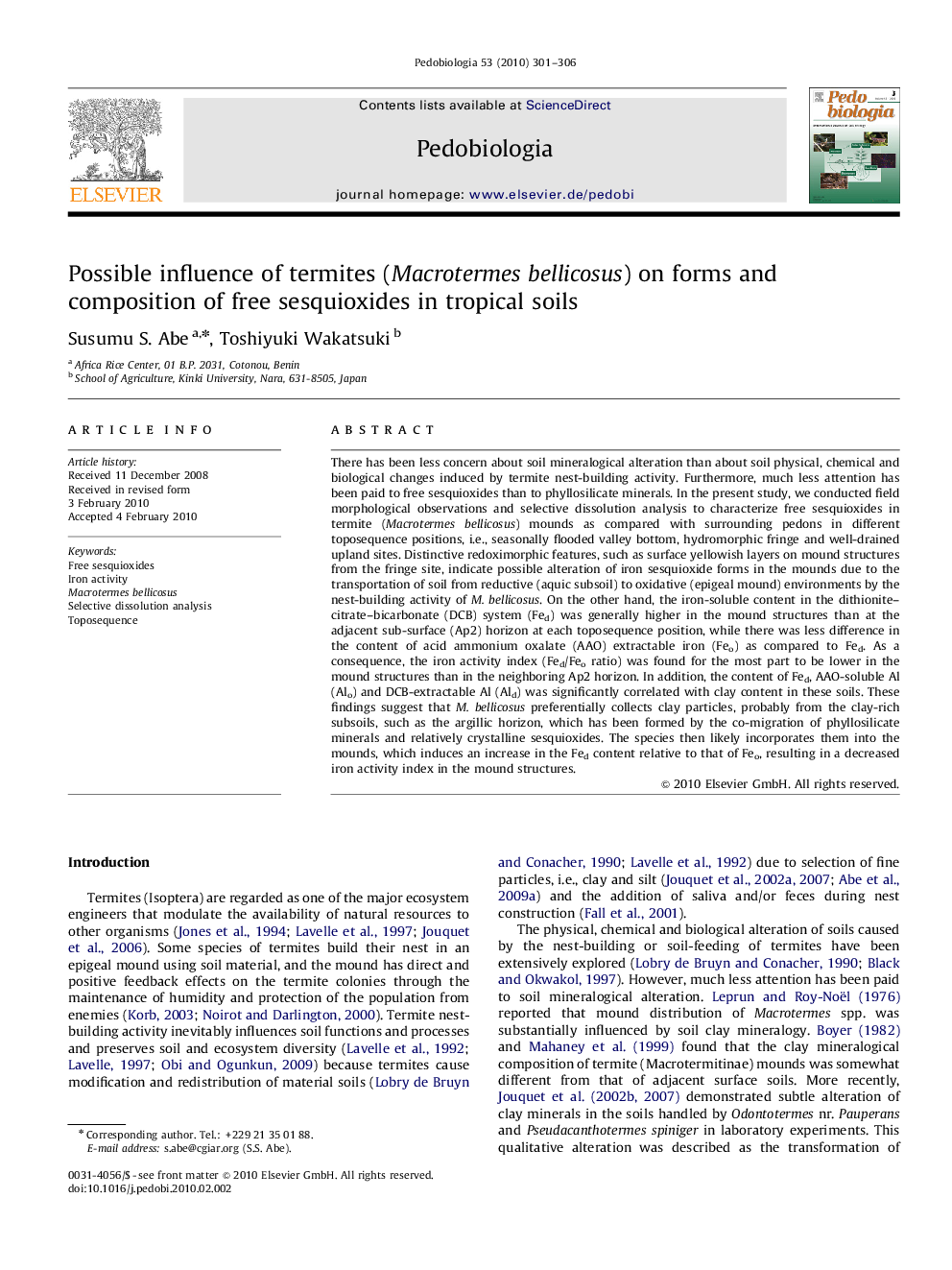| کد مقاله | کد نشریه | سال انتشار | مقاله انگلیسی | نسخه تمام متن |
|---|---|---|---|---|
| 2061495 | 1076495 | 2010 | 6 صفحه PDF | دانلود رایگان |

There has been less concern about soil mineralogical alteration than about soil physical, chemical and biological changes induced by termite nest-building activity. Furthermore, much less attention has been paid to free sesquioxides than to phyllosilicate minerals. In the present study, we conducted field morphological observations and selective dissolution analysis to characterize free sesquioxides in termite (Macrotermes bellicosus) mounds as compared with surrounding pedons in different toposequence positions, i.e., seasonally flooded valley bottom, hydromorphic fringe and well-drained upland sites. Distinctive redoximorphic features, such as surface yellowish layers on mound structures from the fringe site, indicate possible alteration of iron sesquioxide forms in the mounds due to the transportation of soil from reductive (aquic subsoil) to oxidative (epigeal mound) environments by the nest-building activity of M. bellicosus. On the other hand, the iron-soluble content in the dithionite–citrate–bicarbonate (DCB) system (Fed) was generally higher in the mound structures than at the adjacent sub-surface (Ap2) horizon at each toposequence position, while there was less difference in the content of acid ammonium oxalate (AAO) extractable iron (Feo) as compared to Fed. As a consequence, the iron activity index (Fed/Feo ratio) was found for the most part to be lower in the mound structures than in the neighboring Ap2 horizon. In addition, the content of Fed, AAO-soluble Al (Alo) and DCB-extractable Al (Ald) was significantly correlated with clay content in these soils. These findings suggest that M. bellicosus preferentially collects clay particles, probably from the clay-rich subsoils, such as the argillic horizon, which has been formed by the co-migration of phyllosilicate minerals and relatively crystalline sesquioxides. The species then likely incorporates them into the mounds, which induces an increase in the Fed content relative to that of Feo, resulting in a decreased iron activity index in the mound structures.
Journal: Pedobiologia - Volume 53, Issue 5, 10 August 2010, Pages 301–306